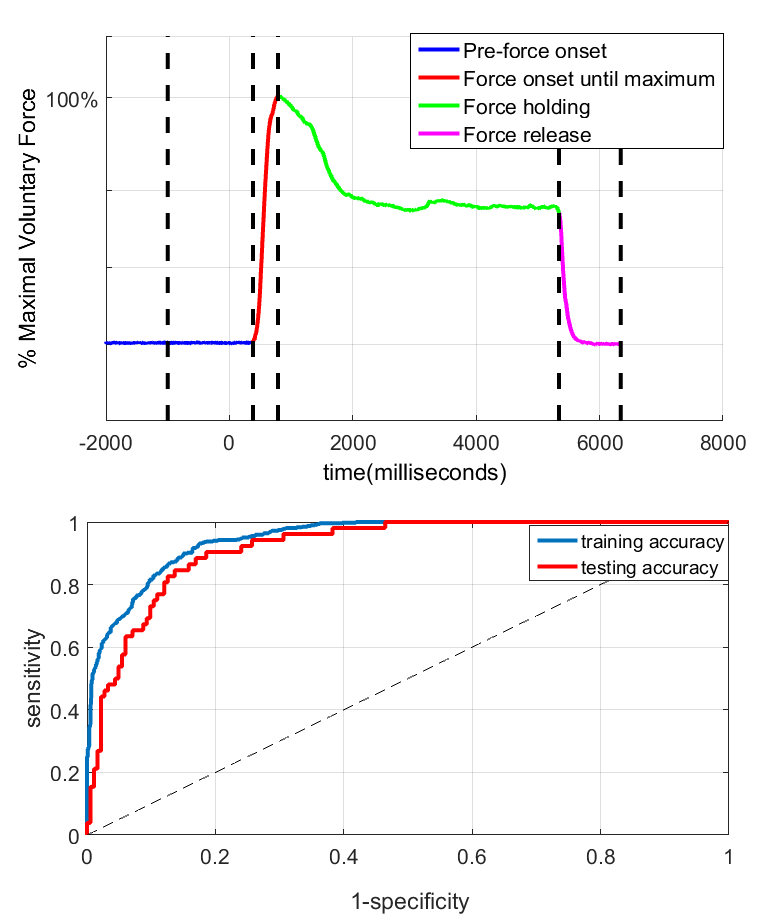Decoding Force from Deep Brain Electrodes in Parkinsonian Patients.
Can we use signals recorded deep in the brain to make sense of (or ‘decode’) intended movements? Answering this question is crucial if we are to bypass muscles in patients who have difficulties with moving or have lost limbs as a result of injury. Here, we show that we can predict different aspects of a grip from brain signals – the first step to using the same signals to control robotic hands.
Limitations of many Brain Machine Interface (BMI) systems using invasive electrodes include reliance on single neurons and decoding limited to kinematics only. This study investigates whether force-related information is present in the local field potential (LFP) recorded with deep brain electrodes using data from 14 patients with Parkinson's disease. A classifier based on logistic regression (LR) is developed to classify various force stages, using 10-fold cross validation. Least Absolute and Shrinkage Operator (Lasso) is then employed in order to identify the features with the most predictivity. The results show that force-related information is present in the LFP, and it is possible to distinguish between various force stages using certain frequency-domain (delta, beta, gamma) and time-domain (mobility) features in real-time.

2017.Int IEEE EMBS Conf Neural Eng, 2017():371-374.